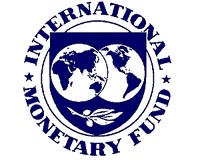 |
Madison WI (SPX) Mar 15, 2010 Materials scientists at the University of Wisconsin-Madison have designed a way to harvest small amounts of waste energy and harness them to turn water into usable hydrogen fuel. The process is simple, efficient and recycles otherwise-wasted energy into a useable form. "This study provides a simple and cost-effective technology for direct water splitting that may generate hydrogen fuels by scavenging energy wastes such as noise or stray vibrations from the environment," the authors write in a new paper, published March 2 in the Journal of Physical Chemistry Letters. "This new discovery may have potential implications in solving the challenging energy and environmental issues that we are facing today and in the future." The researchers, led by UW-Madison geologist and crystal specialist Huifang Xu, grew nanocrystals of two common crystals, zinc oxide and barium titanate, and placed them in water. When pulsed with ultrasonic vibrations, the nanofibers flexed and catalyzed a chemical reaction to split the water molecules into hydrogen and oxygen. When the fibers bend, asymmetries in their crystal structures generate positive and negative charges and create an electrical potential. This phenomenon, called the piezoelectric effect, has been well known in certain crystals for more than a century and is the driving force behind quartz clocks and other applications. Xu and his colleagues applied the same idea to the nanocrystal fibers. "The bulk materials are brittle, but at the nanoscale they are flexible," he says, like the difference between fiberglass and a pane of glass. Smaller fibers bend more easily than larger crystals and therefore also produce electric charges easily. So far, the researchers have achieved an impressive 18 percent efficiency with the nanocrystals, higher than most experimental energy sources. In addition, Xu says, "because we can tune the fiber and plate sizes, we can use even small amounts of [mechanical] noise - like a vibration or water flowing - to bend the fibers and plates. With this kind of technology, we can scavenge energy waste and convert it into useful chemical energy." Rather than harvest this electrical energy directly, the scientists took a novel approach and used the energy to break the chemical bonds in water and produce oxygen and hydrogen gas. "This is a new phenomenon, converting mechanical energy directly to chemical energy," Xu says, calling it a piezoelectrochemical (PZEC) effect. The chemical energy of hydrogen fuel is more stable than the electric charge, he explains. It is relatively easy to store and will not lose potency over time. With the right technology, Xu envisions this method being useful for generating small amounts of power from a multitude of small sources - for example, walking could charge a cell phone or music player and breezes could power streetlights. "We have limited areas to collect large energy differences, like a waterfall or a big dam," he says. "But we have lots of places with small energies. If we can harvest that energy, it would be tremendous."
Share This Article With Planet Earth
Related Links University of Wisconsin-Madison Powering The World in the 21st Century at Energy-Daily.com
 IMF boss defends plan for 'green fund'
IMF boss defends plan for 'green fund'Johannesburg (AFP) March 9, 2010 The head of the International Monetary Fund on Tuesday defended plans to create a 100 billion dollar fund to help countries mitigate the effects of climate change. "The problem of climate change itself is not really in the mandate of the IMF," Dominique Strauss-Kahn told a group of students in South Africa's economic hub Johannesburg. "What is in the mandate of the IMF is to help financi ... read more |
|
| The content herein, unless otherwise known to be public domain, are Copyright 1995-2010 - SpaceDaily. AFP and UPI Wire Stories are copyright Agence France-Presse and United Press International. ESA Portal Reports are copyright European Space Agency. All NASA sourced material is public domain. Additional copyrights may apply in whole or part to other bona fide parties. Advertising does not imply endorsement,agreement or approval of any opinions, statements or information provided by SpaceDaily on any Web page published or hosted by SpaceDaily. Privacy Statement |